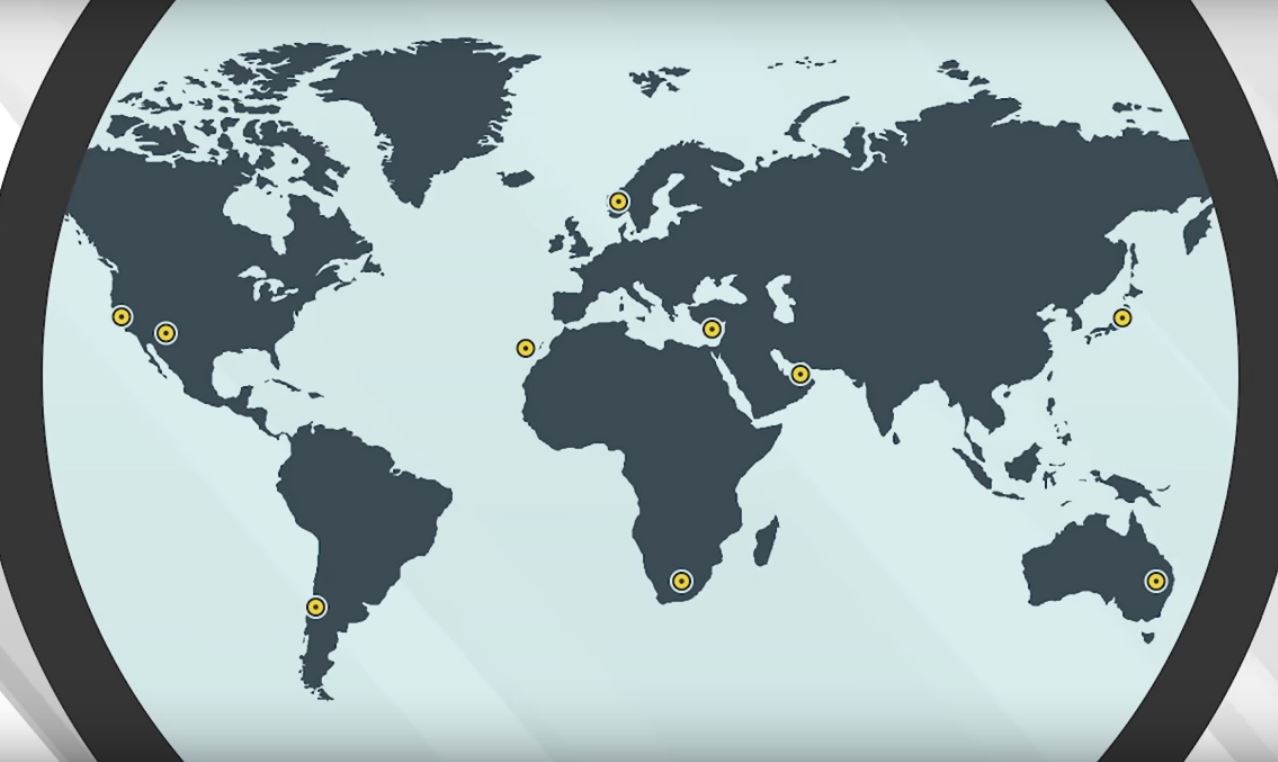Slooh Will Livestream Solar Eclipse on Largest Spanish-Language TV Network
Slooh, an organization that connects skywatchers across the globe to a large telescopic network and airs live celestial events, will broadcast the entire 2017 total solar eclipse in a five-hour livestream. To broaden the audience, Slooh will stream a Spanish-language program on the channel Univision to pair with Slooh's English broadcast on Monday, Aug. 21.
The extensive broadcast will begin at 11:30 a.m. EDT (1530 GMT), and the Spanish broadcast is intended to mirror the one in English, Michael Paolucci, Slooh's founder and CEO, told Space.com. Astronomer J.L. Galache will be anchoring the Spanish program and will be based in Idaho during the eclipse.
Galache told Space.com that he believes many people in South America will also be watching the Spanish broadcast, in addition to the 42.5 million Spanish speakers living in the United States. [Here Are the Best Live-Video Streams for the 2017 Solar Eclipse]
"Since the broadcast will also stream on Univision's Facebook page, and there is a whole continent that speaks Spanish, we hope that even if South Americans can't enjoy the total eclipse and see just a partial one, that they can enjoy a part of [the total eclipse]," he said.
Univision's special coverage, according to an Aug. 16 announcement, will feature special news segments on its morning show "Despierta América," and the channel has invited NASA astronaut José Hernández as a special guest to participate in the network's reporting. Univision news anchors Ilia Calderón and Felix de Bedout will host the program "El Gran Eclipse" (The Great Eclipse), which airs across the country at 1 p.m. EDT/10 a.m. PDT.
In 2017, Univision beat out other national English-speaking networks for 10 consecutive weeks during prime time. This partnership with Univision is the third time Slooh has collaborated with the largest Spanish-language network in the United States; the first broadcast was from Chile in Feb. 2017, and later for a program on comets in March.

Paolucci told Space.com that Slooh's mission is to make space accessible to everyone, in every language. He felt it was only fair to make the parallel broadcast, since many of the telescopes in his network are based in locations where Spanish is most widely spoken. Most of Slooh's telescopes — and really, Slooh's base — is at the Institute of Astrophysics of the Canary Islands, which are part of the nation of Spain, and Slooh also has a telescopic partnership with the Catholic University in Santiago, Chile.
Get the Space.com Newsletter
Breaking space news, the latest updates on rocket launches, skywatching events and more!
Slooh's goal, according to Paolucci, is to build a platform that "removes every barrier to look up and appreciate space, and cost is one barrier, language is another." The news of Slooh's partnership with Univision came a few weeks after Slooh announced it was going to be granting its online users free access to its telescope streaming feeds.
Following Slooh's livestream, which will be sponsored by Frontier Communications, the next step for Paolucci and his team is to create a Spanish-language version for the interactive Slooh website.
You can watch the Slooh broadcasts in Spanish on Slooh’s website, as well as here on Space.com.
Follow Doris Elin Salazar on Twitter @salazar_elin. Follow us @Spacedotcom, Facebook and Google+. Original article on Space.com.
Join our Space Forums to keep talking space on the latest missions, night sky and more! And if you have a news tip, correction or comment, let us know at: community@space.com.

Doris is a science journalist and Space.com contributor. She received a B.A. in Sociology and Communications at Fordham University in New York City. Her first work was published in collaboration with London Mining Network, where her love of science writing was born. Her passion for astronomy started as a kid when she helped her sister build a model solar system in the Bronx. She got her first shot at astronomy writing as a Space.com editorial intern and continues to write about all things cosmic for the website. Doris has also written about microscopic plant life for Scientific American’s website and about whale calls for their print magazine. She has also written about ancient humans for Inverse, with stories ranging from how to recreate Pompeii’s cuisine to how to map the Polynesian expansion through genomics. She currently shares her home with two rabbits. Follow her on twitter at @salazar_elin.









